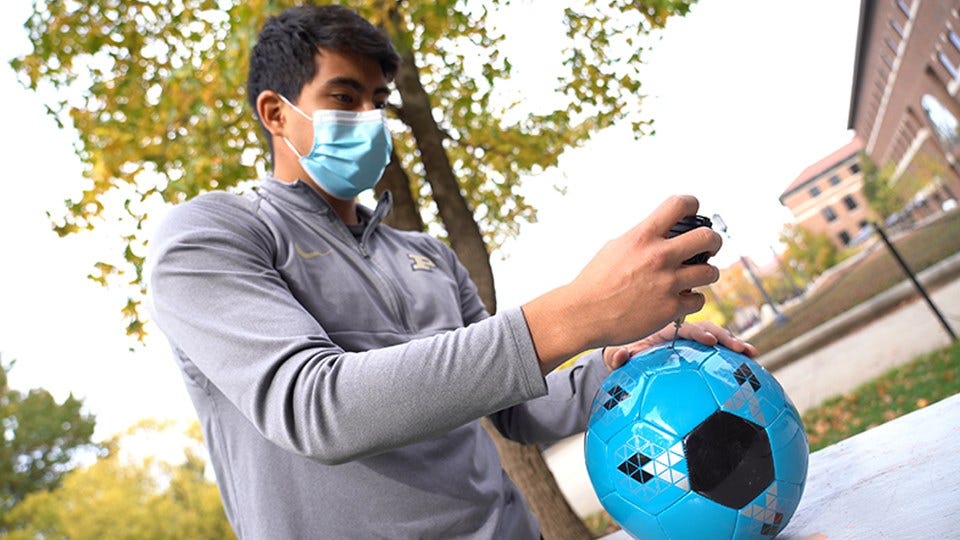Purdue Researching Soccer Players’ Head Injuries
 Purdue graduate student Nicolas Leiva-Molano checks the air pressure of a soccer ball (photo courtesy of Purdue University/Jared Pike)
Purdue graduate student Nicolas Leiva-Molano checks the air pressure of a soccer ball (photo courtesy of Purdue University/Jared Pike)
Subscriber Benefit
As a subscriber you can listen to articles at work, in the car, or while you work out. Subscribe NowA study conducted by Purdue University found that inflating balls to pressures on the lower end of ranges enforced by soccer governing bodies such as the NCAA and FIFA could reduce forces associated with potential head injury by about 20%. To reduce risk of injury, Purdue says the study recommends preventing how hard a ball hits the head by inflating balls to lower pressures and subbing them out when they get wet.
According to the University, up to 22% of soccer injuries are concussions that can result from players using their heads to direct the ball during a game.
“If the ball has too high of a pressure, gets too waterlogged, or both, it actually turns into a weapon. Heading that ball is like heading a brick,” said Eric Nauman, professor of mechanical engineering and basic medical sciences at Purdue.
The study also found that if the ball gets too wet, it can quickly surpass the NCAA weight limit for game play and still produce a nasty impact, the researchers said. Purdue says Nauman’s lab is the first to conduct a study evaluating the effects of each of these ball parameters on producing an impact associated with potential neurophysiological changes.
The study also evaluated ball velocity and showed the variable actually contributes the most to how hard a ball hits, however, ball pressure and water absorption would be more realistic to control.
“You can’t control how hard a player kicks a ball. There are other ways to decrease those forces and still have a playable game,” Nauman said.
According to the university, a professional soccer player heads the ball about 12 times over the course of a single game and 800 times in games over an entire season, past studies have shown.
“The study really sheds light on the issue of how the weight and impact of the ball can change under different conditions,” said Francis Shen, a professor of law at the University of Minnesota. “Sports governing bodies and manufacturers can use this research to further reduce the risk of lasting brain functional or structural injury as a result of head impacts accrued through soccer game play.”
Based on the study’s findings, Purdue says a size 4.5 soccer ball is the safest to play in terms of forces contributed by pressure, mass and water absorption, but reducing pressure and limiting water absorption made a difference for all three ball sizes.
Purdue says the next step would be to replicate its experiments outside of the lab.
You can connect to the full study and results by clicking here.
